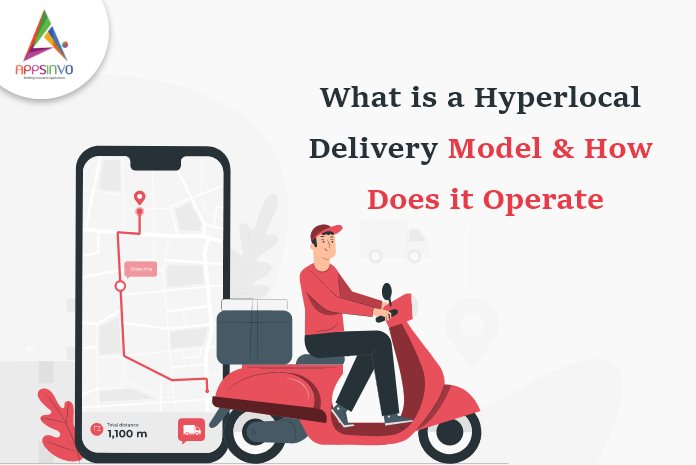Smartphones have been displayed as the game-changer for the on-demand delivery business forms. Ordering food to purchase groceries, the development of on-demand apps has made our life more effortless than ever before. Consumers now favor getting all their fundamental required assistance at their doorstep so that they can keep that amount of time and can get rested till their order gets achieved.
These on-demand apps have given expedition to one such business that is known as hyperlocal business. The hyperlocal delivery design is a perfect model of how technological enhancements can associate with the age-old popular purchasing practices.
What is Hyperlocal Delivery Model?
The term ‘Hyperlocal’ introduces a small geographical area. The hyperlocal delivery model is when the shipment of products is arranged within a special geographical area. The pickup place from where the order is collected and the customer’s residence should rest within the identical pin code.
This sort of delivery form operates regularly in cases of groceries, medicines, general household items, food shipment, and even services such as plumbers, electricians, carpenters, etc. The USP of hyperlocal e-commerce companies rests in their capacity to deliver goods and services at a terribly swift speed.
How does this model operate?
The hyperlocal delivery form is represented as a business form in which the service aggregator receives the requested product nearby region and gives the equivalent to the customer in the identical geographical area.
For instance, let us examine a hyperlocal delivery in food. When The customer places an order for the needed food item through a mobile application, The aggregator gets the order request and passes on the order information to a delivery associate. The delivery associate dispatches a delivery boy to get the demanded goods from a regional shop and makes assured that it reaches the customer at a demanded location. The aggregator makes the entire system and receives a share for the role it performs.
This model is employed in products as well as services like plumbers, electricians, beauticians, etc. The most familiar instance of a hyperlocal delivery model would be Zomato and Swiggy.
Advantages of Hyperlocal Delivery Model
Here are some of the advantages associated with the hyperlocal delivery business model
Support traditional Shops
The increase of e-commerce and online retail has been a warning to conventional shops. Hyperlocal delivery models render them with a chance to optimize their businesses.
Minimum efforts required
Retailers can engage their businesses on their individual platforms and develop their businesses. Everything from pickup to shipment is managed by the app aggregator. Hence retailers can improve their business with the smallest effort.
Builds a sustainable ecosystem
The hyperlocal delivery form is environment pleasant as carbon footprints as long transportations are diminished.
SIngle device management
A single mobile app can assist you to track, regulate and handling the whole hyperlocal marketplace.
Final thought
To sustain and flourish in the industry, you need a robust admin panel, an energetic and powerful customer tracking app, and a powerful delivery driver app. Furthermore, you should always focus on a consumer’s fulfillment. You can presume a huge completion of such businesses in the future.
Till then, stay safe, stay at home, wash your hands, and be happy
For more updates, stay connected and keep reading
Toddles!!













